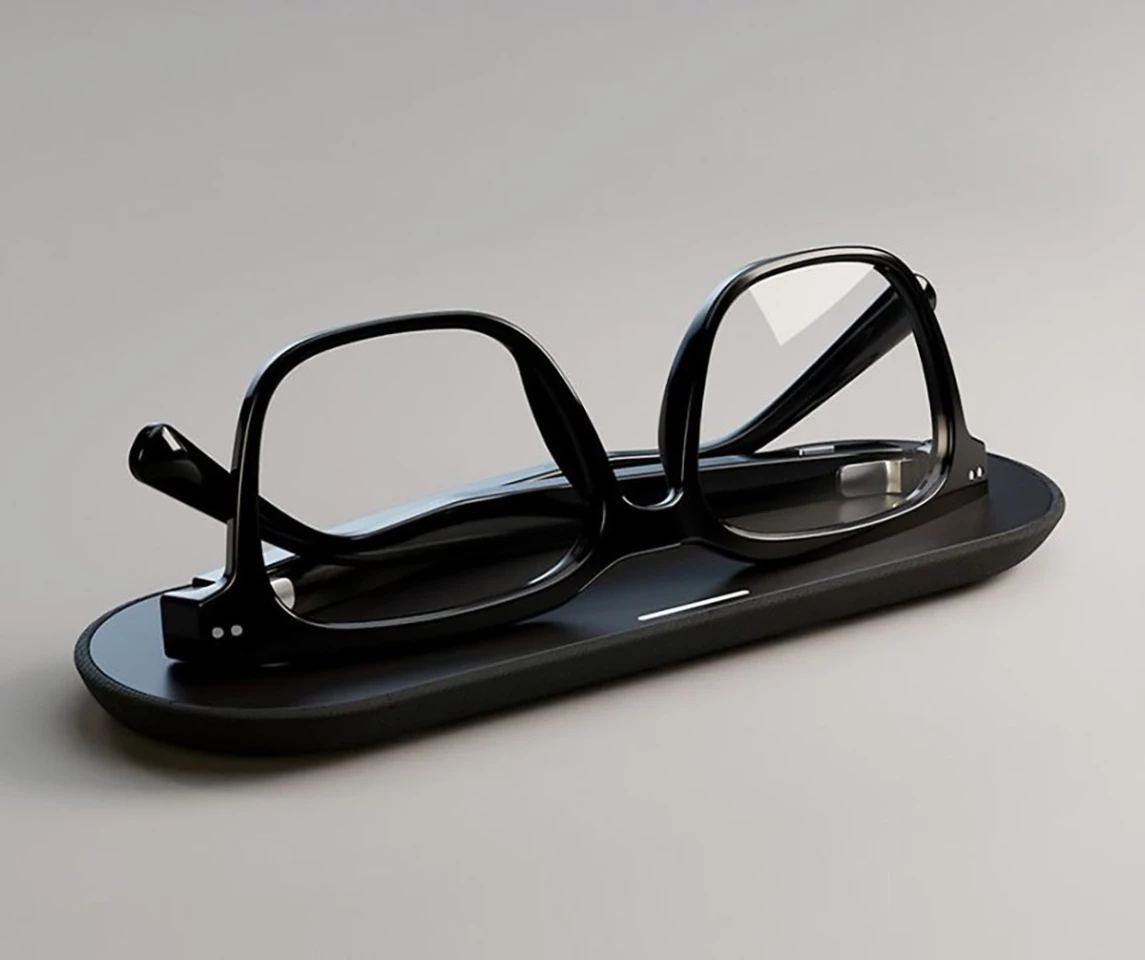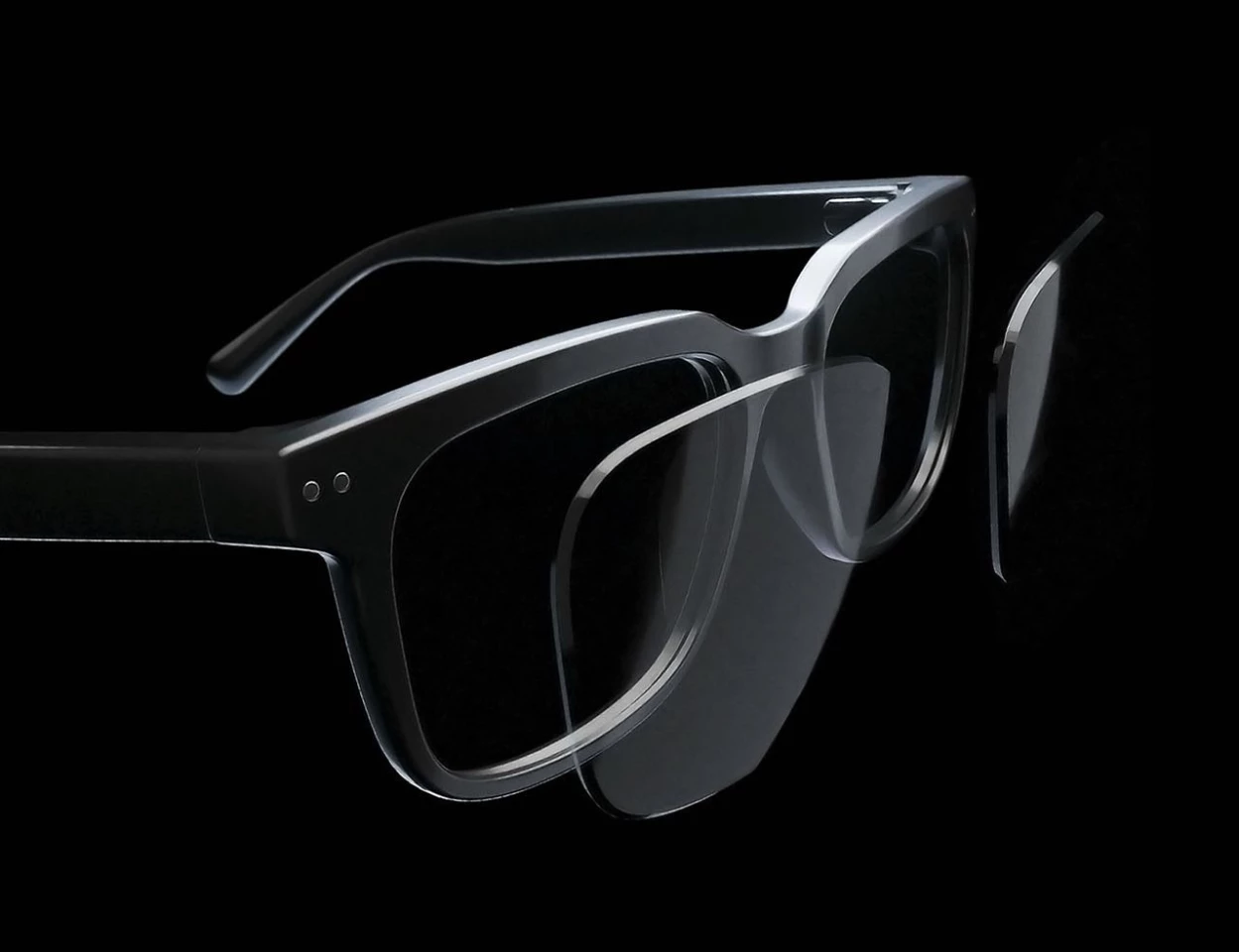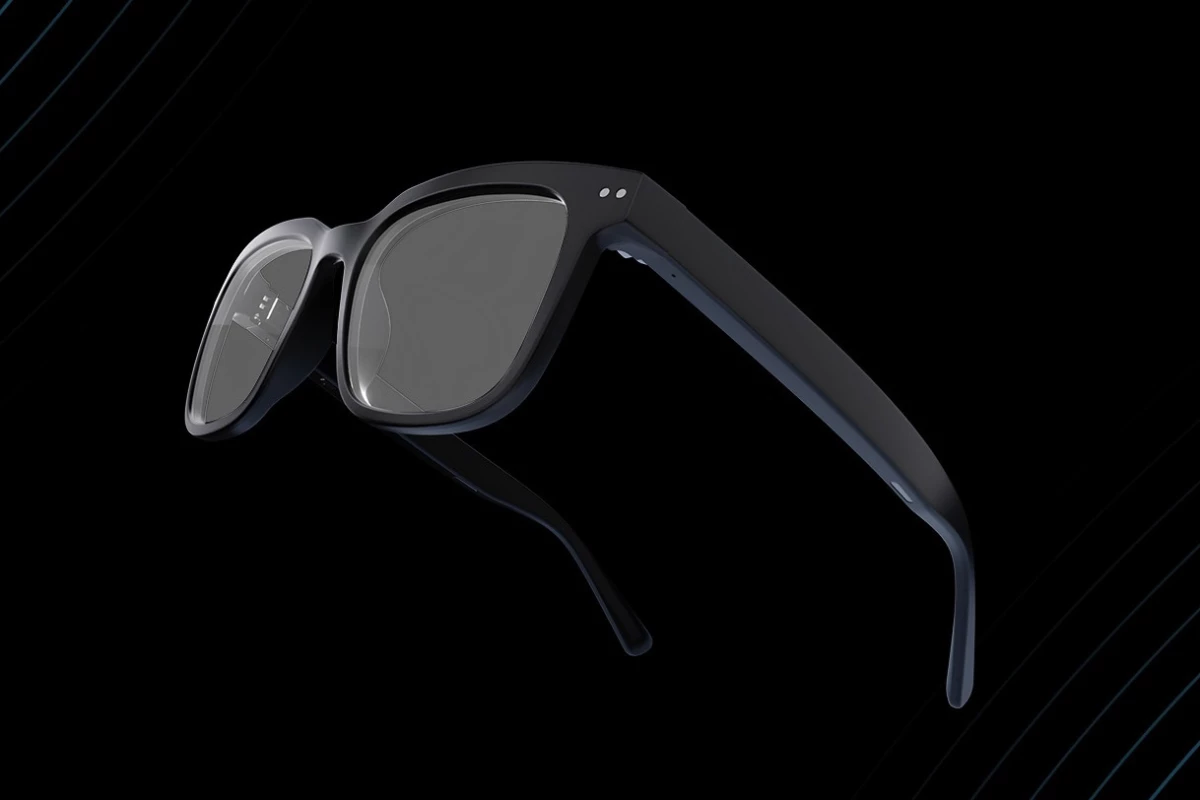If you're among the estimated 1.25 billion people on the planet who suffer from mild to moderate hearing loss, you might want to try on these glasses. They hide clever tech in the frame to help you hear better in noisy environments, all without the need for traditional in-ear hearing aids.
The glasses are from Nuance Audio, a new brand under eyewear giant EssilorLuxottica's umbrella. After showing off the tech for over a year now, the company has finally received FDA clearance and EU certifications that allow it to sell these glasses over the counter in the US and Europe as soon as the first quarter of this year.
Here's everything things you need to know about the Nuance Audio glasses.
Hardware
These glasses use a combination of microphones and 'beamforming' technology to capture sound in the direction you're facing. This is sent amplified for your ears and delivered via air conduction speakers embedded into the frame, so you should be able to hear conversations in front of you more clearly and easily.

They'll pick up and boost speech and sounds up to 9 ft (3 m) away. Nuance Audio says it's engineered the glasses for audio output with "exceptionally low latency response," so you can hear speech in front of you with no delay whatsoever.
The company also says the glasses weigh about the same as normal glasses. They'll be available in two styles (square and rounded), in two colors each.

You can opt for prescription lenses, and even get transition lenses that turn dark in bright sunlight to protect your eyes from UV rays.
The glasses are bundled with a wireless charging pad and a carrying case; you can also pick up a tiny remote control to quickly adjust volume and audio modes.

The wearable is rated IPX4, which means it should survive exposure to light rain and sweaty workouts.
You can expect about 8 hours of continuous use from a full charge, which takes about 3 hours. When not in use, your glasses can maintain a charge for about 6 days.
Nuance Audio says the battery will do 500 cycles in the first year and a half before its capacity starts to drop – and from there, it should stay above 85% capacity up to 1,000 cycles.
App control
A companion mobile app lets you calibrate audio output, as well as control the glasses' sound modes and volume. However, you don't need to have the app or your phone on your person to use the glasses.

Experience
You can switch between the glasses' "frontal" mode, which amplifies sounds coming from in front of you, and "all-around" mode that amplifies sound from all directions. People around you likely won't be able to hear the amplified audio.
These glasses aren't designed to pair with your phone for beaming audio from streaming music services, podcast apps, and phone calls. However, they'll work fine when you hold the phone to your ear to make calls or use speakerphone mode.

It's worth noting that you don't need to take a hearing test to buy these. But if you're curious, Nuance Audio offers an online test to determine if this wearable is right for you.
These glasses could also be useful for folks without hearing loss. "While some people may not struggle to understand speech, they might still seek some relief from the listening effort that is usually required when holding a conversation in a noisy environment, or with multiple speakers," explains the company. "Nuance Audio Glasses are beneficial as they amplify sounds coming from the direction the listener is facing, thus improving how loud the target speaker can be heard as compared to the surroundings."
Pricing and availability
Eyes On, which covered Nuance Audio at the American Academy of Optometry's 2024 annual meeting last November, noted these glasses would come in at US$1,100. We'll have to wait for the brand to officially confirm pricing, though. For reference, prescription hearing aids can set you back by anything from $1,000 to $4,000.
The rollout will begin in the first quarter of this year, starting in the US and Italy; France, Germany, and the UK will follow.

There used to be a stigma around wearing hearing aids; in a study published in 2011, people with hearing loss reported feeling "too embarrassed to wear" these devices, and worried they "make you look disabled." A survey from 2023 shows this negative perception of people wearing hearing aids among the public has been fading out. However, research published last year out of the UK shows that 1 in 3 people would try and hide hearing aids if they needed them.
So, these inconspicuous glasses could be an attractive option for people who don't want to be identified as having hearing issues. The glasses also represent a much-needed expansion in the range of accessible tech available to people with hearing impairment – similar to Apple's AirPods Pro 2,which can also be used as hearing aids in several countries.
What's especially neat is how these glasses are virtually indistinguishable from regular ones, with no earpieces in sight. This also negates any possible discomfort in the ear canal that could be caused by traditional hearing aids over extended periods of time. Hopefully, they'll become more widely available around the world once they're launched, and perhaps more affordably priced down the line.
Source: EssilorLuxottica








